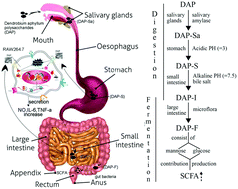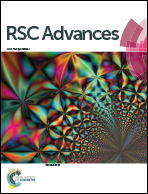Artificial simulation of salivary and gastrointestinal digestion, and fermentation by human fecal microbiota, of polysaccharides from Dendrobium aphyllum
Abstract
In vitro salivary and gastrointestinal (GI) digestion and fermentation of polysaccharides extracted from Dendrobium aphyllum were investigated in this study. Salivary amylase showed no influence on D. aphyllum polysaccharides (DAP). The molecular weight of DAP decreased dramatically during the first 0.5 h of gastric digestion, and then reduced steadily during the subsequent GI tract consumption. The content of reducing sugars increased steadily during GI digestion. Only released free mannose of DAP was detectable by gas chromatography-mass spectrometry analysis during the first 12 h of fermentation, which was contributed by fecal microbiota metabolism. In terms of the fermentation pattern, the pH dropped significantly due to the formation of six types of short-chain fatty acids (SCFAs). This study demonstrates that polysaccharides extracted from D. aphyllum can be digested by the GI tract and are physiologically active in the human large bowel by lowering the pH of the large intestinal environment and promoting the production of SCFAs.

- This article is part of the themed collection: Editors' collection: Food Engineering, Science, Technology, and Nutrition


 Please wait while we load your content...
Please wait while we load your content...